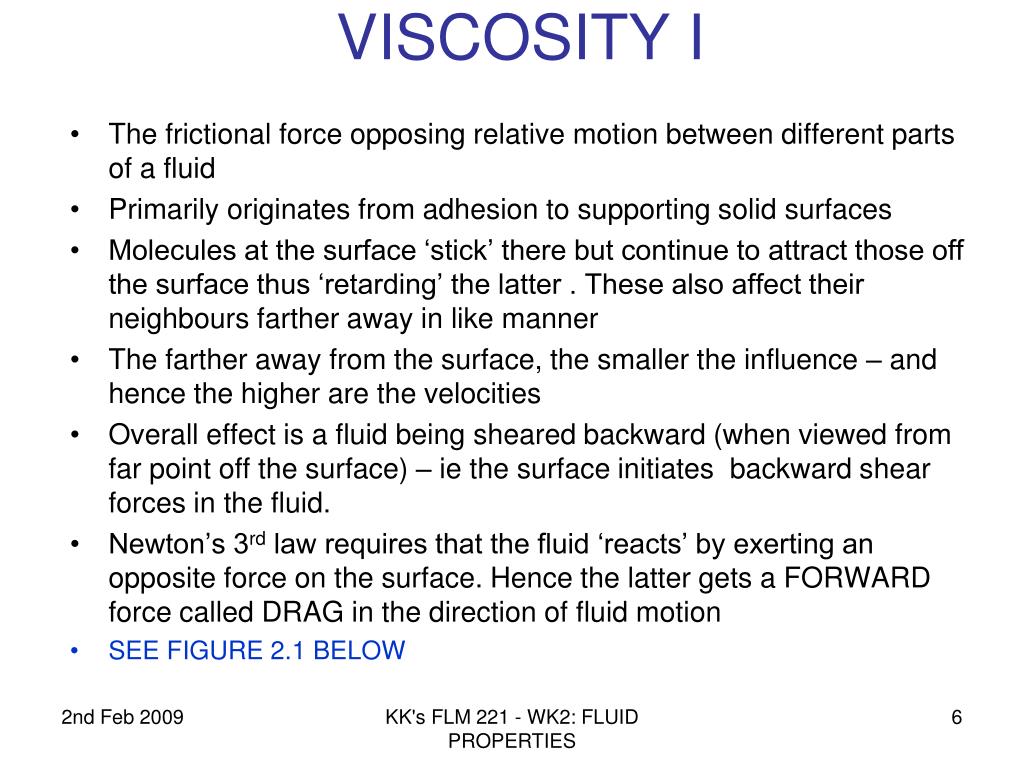

Both of the bulbs are at different heights. It is an open-ended U-tube with two bulbs used to measure kinematic viscosity. It is measured by an apparatus called capillary viscometer. It is measured by the fluid’s resistance to flow under the gravitational force. Kinematic viscosity: It is the ratio of the viscosity of a fluid to its density. It is measured by the fluid’s resistance to flow upon application of external pressure. Types of viscosityĭynamic or absolute viscosity: It is the ratio of shearing stress to the velocity gradient of a fluid. The slower the ball moves in the fluid, the more is the viscosity. The velocity is determined by dividing the distance between two points by the time taken by the ball to travel between these two points. Η = 2a2g∆ρ/9v here ∆ρ is the density difference between the fluid and sphere, a is the radius of the sphere, g is the acceleration due to gravity, and v is the velocity of the sphere. When the ball attain a terminal velocity, the equation can be rewritten as, The viscous drag force on a sphere of radius r moving with a velocity v in a fluid of viscosity η is given by Stokes’ law The time taken by the ball to reach from one point to another is noted down. In a real-life experiment, viscosity is determined by dropping a spherical metal ball down the fluid. Η = F∆z/A∆v where η is viscosity, F/A is shearing stress, ∆v/∆z is the velocity gradient.Īs per this formula, the shear of fluid is inversely proportional to its viscosity. Shearing stress is defined as the force between two layers in contact with each other, moving in opposite directions. Viscosity is the ratio of shearing stress to the velocity gradient in a fluid. One litre of honey would be just as viscous as ten litres of honey. However, it does not depend upon the amount of material. Such fluids are known as Newtonian fluids. Sometimes, the viscosity of a fluid is independent of pressure. It would start to flow more easily and quickly than the room temperature honey due to a decrease in viscosity.įor gases, viscosity is directly proportional to the square root of temperature, i.e., it increases with the rise in temperature.Ī change in pressure can also affect the viscosity of liquids-the viscosity of liquid increases with an increase in pressure as the resistance to the liquid flow increases. Heat honey in a microwave or over a stove. For liquids, it is inversely proportional to temperature, i.e., it decreases with an increase in temperature and increases with a decrease in temperature. Viscosity is dependent on several factors, the major being temperature.
#Definition of viscosity fluid dynamics free
However, the internal friction of gases is minimal due to which gases are free flowing. Here, it is to be noted that fluid means both liquid and gas. The opposite of viscosity is fluidity, which is defined as the ease with which a fluid flows. Its SI unit is newton-second per metre square (N s m-2) or poiseuille (P). Viscosity definition is a measure of the resistance of fluid flow. On the other hand, when these intermolecular forces between two layers are weak, the fluid flows without any restriction. When these forces are strong, the forces of friction between the layers are high, and fluid flow is restricted.

Intermolecular forces exist between two layers. If the force of friction between two adjacent layers is high, then the movement would be hindered. This is because honey consists of several layers, and it moves due to the movement of one layer over the other. When you drop honey down on a slant wooden board, it flows down slowly. What is viscosity?Ī fluid can be thought of as a stack of layers that are sliding on one another. Mathematically, viscosity can be determined from a formula that relates shearing stress to the velocity gradient. Examples include honey, sugar syrups, etc. However, if it is flowing slowly and with difficulty, the viscosity is said to be high.

If fluid can flow freely, it is said to be less viscous. In simple words, how easily a fluid can flow is determined by its viscosity. What is viscosity? It is defined as the measure of the resistance of a fluid (gas or liquid) to any change in shape or motion.


 0 kommentar(er)
0 kommentar(er)
